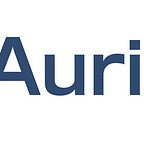Why Blockchain may not be a good fit for Central Bank Digital Currencies
Digital currencies are disrupting centuries old economic and monetary models since the introduction of Bitcoin and Blockchain technologies. Digital currencies offer numerous advantages over incumbent Central bank issued currencies. Official currencies are based on the assets of the economy, and their value depends upon supply and demand, which is controlled by sovereign central banks. The events of 2008 laid bare the limitations of official currencies and their usage as inefficient regulation and compliance wiped out billions of dollars of value, rendering millions to penury. It was in this background, that a mysterious Satoshi Nakamoto proposed the concept of blockchain and its cryptocurrency, Bitcoin, a self-governing digital currency with a decentralized monetary value determined by actual supply and demand. However, Cryptocurrencies would lead to the disintermediation of Banking and therefore disrupt established economic models, which can be a mixed bag. There are technical aspects to the blockchain protocol that expose it to third party risks, that are often missed in the din of the technology and the volatility of Bitcoin, both of which leaving even the most faithful of cryptocurrency believers gasping.
Let us begin by understanding some key aspects of Cryptocurrency before delving further. Blockchain is Distributed Ledger protocol that supports Peer-to-Peer (P2P) transactions, instead of established centralized transactions systems. P2P transactions need third -party validation to ensure transparency, immutability, and non-repudiation. In the Blockchain protocol, transaction validation is executed by third-party “miners” by mining each node (or digital wallet) participating in the transaction. Miners extract transactions from the respective nodes and add to the chain of blocks and continues to be validated by at least 51% of the miners, a process called “consensus”, for which miners receive cryptocurrency as compensation for their effort. A point to be noted here is that cryptocurrencies will be stored in the user’s node/wallet, thus leading to decentralized financial models, not entrusted with a financial institution, disrupting existing monetary systems and business models. Financial instruments such as loans and deposits will need to be redesigned all over for Decentralized Finance.
As governments are beginning to accept the fast-changing scenarios of mainstreaming of cryptocurrencies and blockchain technology, central banks are exploring the possibility of Central Bank issued Digital currencies overtime. While this has many aspects of disruption and rebuilding economic models, a little perceived threat lies in the aspect of mining and consensus. In the case of public blockchains and cryptocurrencies, a key aspect is mining and the consensus that miners need to achieve 51% consensus. One of the frauds that occur in Blockchain is 51% Crypto Fraud where majority of miners may cartelize and reverse a transaction. With over 81% mining now monopolized by China, we face the risk of CBDC mining monopolized by China, which can be a serious financial security risk for any sovereign currency. A mining farm hidden behind a digital security systems and firewalls to obfuscate the miners’ identity and location can be achieved for a few tens of dollars a year. Securing each miner’s identity with stringent KYC and effecting enforceable smart contracts to automate real-world transactions in Decentralized Finance. A secure and permanent solution would be to consider alternative mining-less Distributed Ledger Technologies that can scale and offer higher throughput, such as Aurigraph DLT, which can handle both cryptocurrencies and FIAT currencies.
